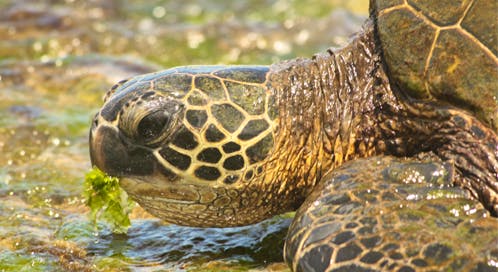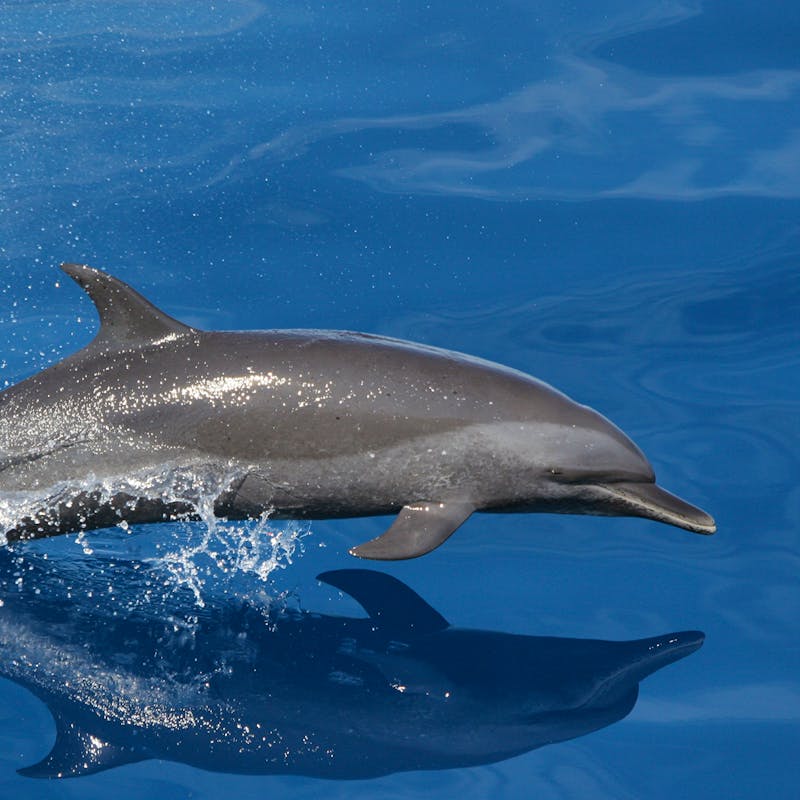I’m happy to report that once again, green sea turtles have set a new record for nesting at Archie Carr National Wildlife Refuge! More than 12,000 nests were documented within the 12-mile portion of the refuge in Brevard County. As of October 13, the University of Central Florida’s (UCF) Marine Turtle Research Group had documented 12,902 green turtle nests, 11,542 loggerhead nests and 43 leatherback nests, all very promising numbers, and great news for these imperiled species still working towards recovery.

Sea turtle nesting at Archie Carr National Wildlife Refuge is some of the best-studied in the world. UCF’s Marine Turtle Research Group monitors up to 25 miles along the Atlantic coast in central Florida from Sebastian Inlet (near Melbourne Beach) to Patrick Air Force Base. They have been collecting data on sea turtle nesting and reproductive success for this stretch of coastline since the late 1970s.
Thirty years ago, fewer than 50 green turtle nests were laid in any given season within the same stretch of beach. Today, Archie Carr NWR and the sea turtles nesting on that stretch of beach are a shining example of what conservation can achieve. The state of Florida supports 90% of all sea turtle nesting in the continental United States, and this refuge protects what is now considered perhaps the most important nesting beaches in the world for threatened loggerhead sea turtles. This same area also supports the highest density of endangered green sea turtles in North America, and an increasingly important nesting area for endangered leatherbacks.
Dr. Kate Mansfield, who directs UCF’s Marine Turtle Research Group, said the green sea turtle nests laid in the Brevard section of Archie Carr will probably result in more than 700,000 hatchlings emerging. It’s a great number to hear, but not as big as you might think. Only 1 in 1,000 to 10,000 sea turtle hatchlings survive to reproductive maturity (around 25 years for green turtles). We saw part of the reason behind this in the recent scare from Hurricane Joaquin. Strong storms can wash away or damage sea turtle nests. But sea turtles have evolved over time to deal with storms. By laying many eggs – an average of 135 per green turtle nest – sea turtles make sure that even if many of the eggs or hatchlings are lost, there are still some left to survive and carry on the species.
Sea turtles’ system of survival has been working for them for millions of years, but sea level rise, and beachfront real estate are giving sea turtles less and less room to nest safely. Sea turtle populations have been increasing thanks to decades of conservation efforts. With climate change already affecting Florida’s coasts, we need to continue this important work, especially when it comes to protecting more nesting habitat. Some of the steps being taken to protect human structures from erosion and flooding can have serious impacts for sea turtles. Pumping new sand onto eroded beaches, constructing seawalls to protect buildings, and government-subsidized flood insurance that encourages even more development all threaten sea turtles and other wildlife that rely on healthy beach habitat.
Our team works with agencies and state officials to make sure that projects like these are built with wildlife in mind, instead of as an afterthought – and this kind of work will only grow to be even more important as sea levels continue to rise, and development continues to eat up the remaining beach habitat. It’s great to see that several species of sea turtles are working their way towards recovery, and that decades of conservation work towards that goal is really starting to pay off. But equally important is making sure that as more sea turtles survive to adulthood, they have safe places to come to shore to nest, laying the groundwork for the next generation.





